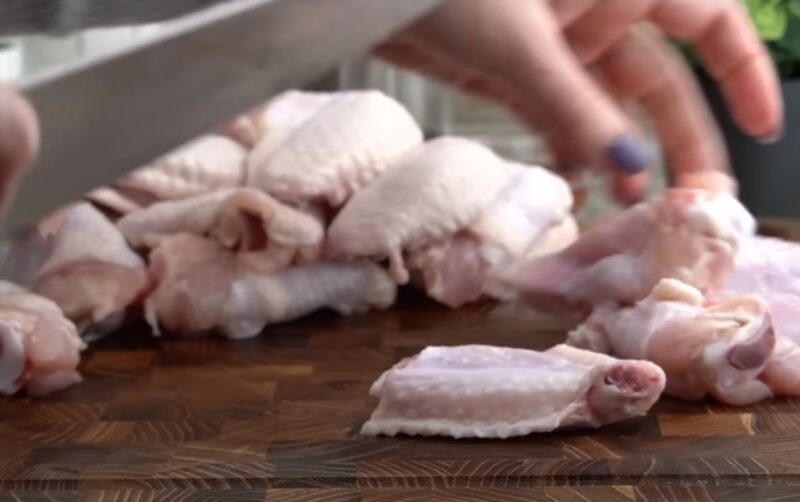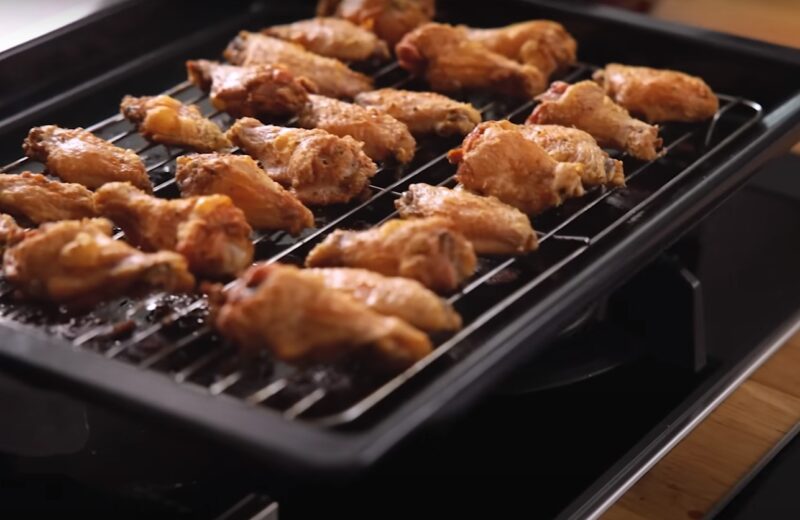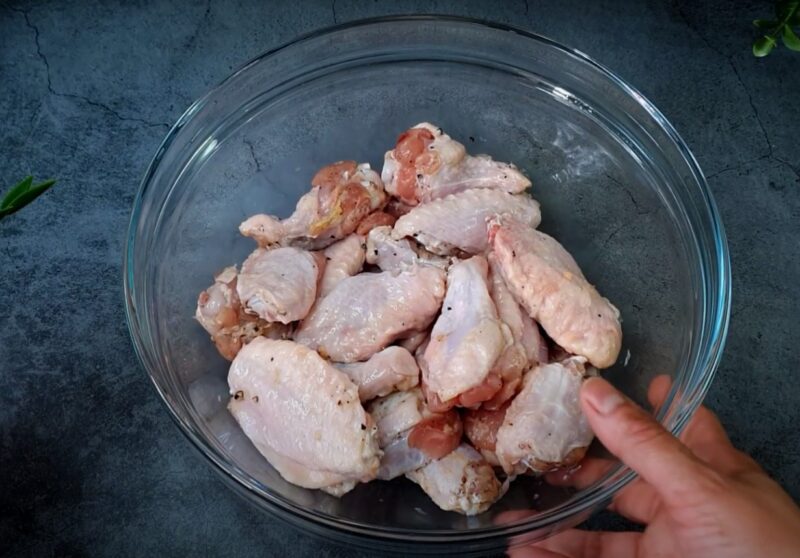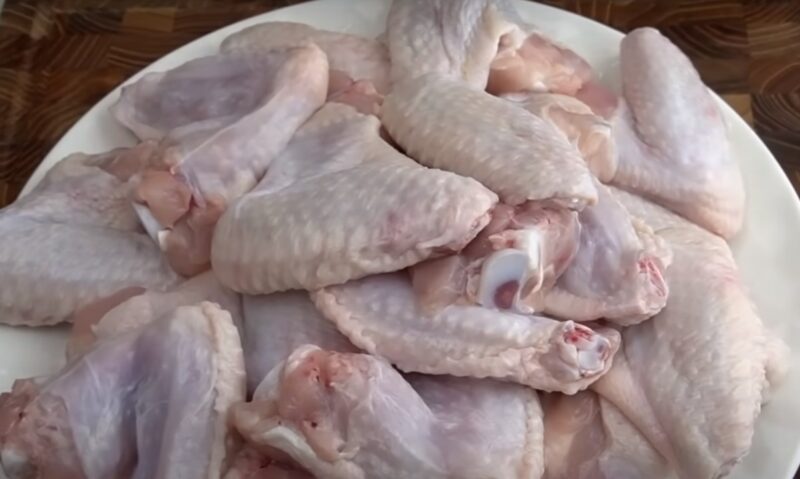Discovering what appears to be hairs on your chicken wings can be an unsettling experience. Many of us have encountered this phenomenon, whether it’s while preparing a meal at home or dining out, leading to questions and concerns about the quality and safety of our food.
This article aims to demystify the presence of these “hairs,” explain why they occur, and offer practical advice on how to deal with them, ensuring that your culinary experience remains enjoyable and safe.
Key Takeaways
What Are Those Small Hairs?

The “hairs” observed on both fresh and frozen chicken wings are, in fact, minuscule feather shafts or remnants. During the processing of chickens, not all feathers are removed completely, leaving behind these small shafts.
It’s a normal occurrence that poses no health risk to consumers. These are not actual hairs but part of the bird’s feathering that can alleviate some of the initial discomfort.
Commonality and Causes
These feather remnants tend to be more prevalent on younger birds and wings that have undergone less efficient processing. The efficiency of plucking feathers can vary, leading to some feathers being partially left behind.
The age of the bird and the methods used in processing can affect how many of these shafts are visible on the final product.
Health and Safety Considerations
Despite their appearance, these tiny feather shafts are completely harmless. They do not indicate that the chicken is unsafe to eat or that there has been a lapse in the processing quality.
Chickens are subjected to rigorous health inspections before being processed, ensuring that the meat is safe for consumption.
Can You Eat Them?

Yes, it is safe to consume these feather shafts. They undergo the same cooking process as the rest of the chicken, being exposed to high temperatures that eliminate any potential health hazards.
The safety of these shafts is not in question, though some may find their texture less than appealing.
Texture Concerns
While safe to eat, the texture of these tiny shafts may be off-putting for some. The sensory experience of eating is as much about texture as it is about taste, and the presence of these remnants can alter the mouthfeel of the chicken wings for some individuals.
Quality Misconceptions
It’s crucial to dispel the myth that the presence of feather shafts is indicative of poor-quality chicken or health issues. These remnants are a normal byproduct of the processing phase and do not reflect on the chicken’s quality or safety.
Rigorous inspections ensure that all chicken meat is free from disease before it reaches the consumer.
Myths Debunked

A common misconception is that these feather remnants signify that the chicken was diseased or of inferior quality. This simply isn’t true.
The processing of poultry is a complex operation, and despite advances in technology, not all feathers are always completely removed.
Misunderstandings About Poultry Processing
Some people mistakenly believe that the appearance of these shafts is a sign of negligence or shortcuts in poultry processing. In reality, they are a minor and unavoidable part of the process that does not impact the meat’s safety or nutritional value.
Clarifying Health Risks
The myths surrounding these feather remnants often stem from a lack of understanding about poultry processing and food safety standards. It’s important to recognize that these tiny shafts are neither harmful nor indicative of a compromised product.
How To Remove Hair Before Cooking?
For those who prefer their chicken wings without these feather remnants, several effective methods can be employed:
- Torch Method: A culinary torch or lighter can quickly burn off the tiny shafts, offering a quick solution.
- Tweezers Method: For precision, using a pair of tweezers to grab and pull individual shafts can be effective.
- Hand-Plucking Method: Some may opt for the direct approach of plucking the remnants with their fingers, though this method may require more time and patience.
Tips for Efficient Removal
Effective removal requires good lighting and sharp tweezers. Patience and thoroughness are key to ensuring that all remnants are removed.
After plucking, rinsing the wings can help ensure that they are clean and ready for cooking, providing peace of mind and a more appetizing appearance.
Personal Preference
Ultimately, whether to remove these feather shafts is a matter of personal preference. They are harmless and do not affect the taste of the chicken wings.
However, removing them can enhance the visual appeal and texture of your dish, aligning with individual tastes and preferences.
FAQ
Why do some chicken wings have more “hairs” than others?
The number of visible “hairs” or feather shafts on chicken wings can vary due to several factors, including the bird’s age and the efficiency of the feather-removal process during processing. Younger birds and less thorough processing methods may result in more remnants being left behind.
Are there any chicken breeds that are more prone to leaving behind feather shafts?
While the breed of chicken does not directly influence the presence of feather shafts, the processing techniques and equipment used at different facilities can affect how cleanly feathers are removed. The variation is more about processing practices than the chicken breed itself.
Can the cooking method affect the visibility or texture of these feather shafts?
Cooking methods can indeed affect the visibility and texture of feather shafts. High-heat methods like grilling or frying may make them less noticeable, either by shrinking them or by blending them into the chicken’s skin texture, whereas slow cooking methods might not alter their appearance as much.
Is there a way to prevent feather shafts from appearing on chicken wings?
Preventing feather shafts from appearing on chicken wings is challenging for the consumer, as it relates to the poultry processing stage. However, selecting wings from brands known for their thorough processing may reduce the likelihood of encountering them.
Do organic or free-range chickens have fewer feather shafts on their wings?
The occurrence of feather shafts is not significantly impacted by whether the chicken is organic or free-range. It is more closely related to the processing methods used after the chickens are harvested. Both organic and conventional chickens can have feather shafts if the feather removal process is not entirely efficient.
How does the industry address consumer concerns regarding these feather shafts?
The poultry industry continuously seeks to improve processing methods to minimize the presence of feather shafts and enhance product quality. This includes investing in better plucking technology and training staff to ensure that chickens are processed as cleanly as possible. However, some remnants may still be present due to the inherent limitations of current technologies.
Summary
Finding “hairs” on chicken wings is not uncommon and is generally considered harmless. However, it can be off-putting to some.
When you know what these “hairs” truly are and learn how to remove them if desired, you can enjoy your chicken wings without concern. Boneless wings and wings from certain regions might be less likely to have this issue, offering alternatives for those particularly sensitive to the texture.

